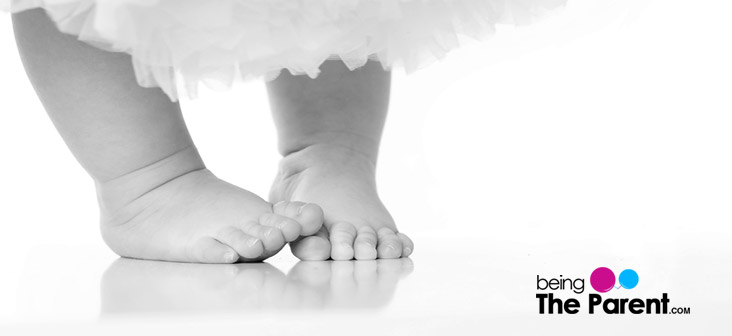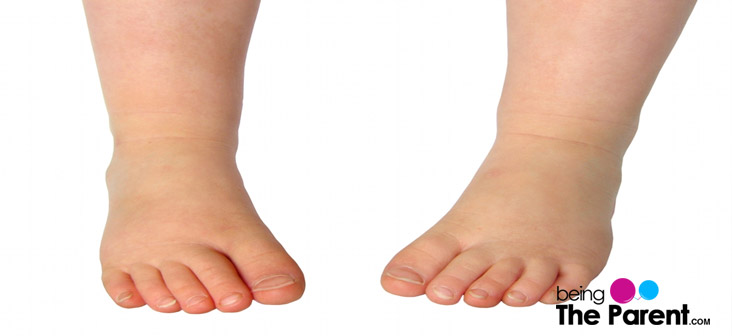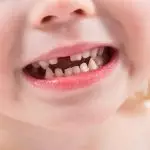
In-Toeing And Out-Toeing In Kids
4 min readWritten by Editorial Team

Children grow unbelievably fast. As a mother, it’s quite natural for you to watch closely the development of the baby and how they accomplish each of their growing milestones. Standing and walking is an important milestone most of the mothers look forward to. Kids start to stand and walk long before the muscles and bones in their feet and legs have fully developed. Therefore, in the beginning, you may notice some peculiarities in their gait and also some wobbly walk. The way of walking of a toddler will be different than that of grown-up kids. For example, toe walking is common in toddlers around the age of three. The adult gait and posture develop only around the age of 8 years. Most of the mild issues related to gait will resolve on its own as the baby grows. However, some issues need medical assistance.

The most commonly found abnormal walk among kids are in-toeing and out-toeing. Baby’s position in the womb and family history plays a role in acquiring these conditions to a certain extent. Mostly these conditions won’t cause any pain or pose any hindrance in walking, running, or playing and will resolve eventually as the kid grows up. But then again, there are also some exceptions. Continue reading to know more.
What Is In-Toeing In Kids?
Most people’s feet point straight ahead or slightly outwards. But in some cases, some of the kid’s feet will point inward. An inward rotated feet where the toes point toward the midline when they walk is called in-toeing. It is also commonly called as “pigeon’s toe”, and can appear during any time of the development of the baby.
What Causes In-Toeing In Kids?
The in-toeing in kids can be caused due to:
- Femoral torsion: This is a condition where the femur or the thigh bone is turned inward. As a result of the inwardly twisted femur, both the knees and the feet point inward forming the pigeon’s toe
- Internal tibial torsion: Here, the inward rotation occurs at the shinbone (tibia). This condition usually occurs before birth, when the baby’s legs rotate to fit in the limited space in the womb. Usually, after birth, the newborn baby’s legs rotate to align properly. But if the lower leg remains rotated inwards it will result in internal tibial torsion
- Metatarsus adductus: This is the most common form of in-toeing in which the foot is bent inward from the middle part to the toes just like a kidney bean. In some cases, it can be milk and flexible while in some it can be more rigid and obvious. In nine out of ten cases, the in-toeing due to metatarsus adductus will resolve by the time baby turns one
What Is Out-Toeing In Kids?
Out-toeing also called “duck feet” is an opposite condition of pigeon’s toes. This condition is more visible than in-toeing due to the peculiarity of the child’s walk. Unlike in-toeing, out-toeing can cause pain and long-term disability. This is because the out-toeing puts immense pressure on the joints of hip, legs, and feet as the baby grows and gains weight. Therefore, timely treatment is necessary for out-toeing. Otherwise, there are higher chances of your baby developing childhood arthritis

What Causes Out-Toeing In Kids?
The out-toeing can be caused due to:
- Femoral retroversion: Here, the thigh bone (femur) is angled backward compared to the hip joint. This backward angling can cause the feet to turn outside
- Hip contracture: If the baby is wrongly positioned in the womb, they can be born with externally rotated hips. Because they have not moved during gestation, the baby’s hip can remain in this tight position after birth too. Prolonged hip tightness can make the feet turn outward when the baby walks. Out-toeing due to hip contracture is found to resolve on its own without any treatment
- Flat feet: Flat feet occurs when the child does not have an arch in his feet. Since an arch does not form, the feet of the kid will appear to turn outward. Children having out-toeing due to flat feet will seldom have any symptoms of pain or complication and therefore no treatment is required
- External tibial torsion: External tibial torsion is commonly seen in adolescents and is a condition where the leg bone twists outward. External tibial torsion generally occurs in kids in late childhood or early adolescence. Usually, only one leg is affected in this condition
How Is In-Toeing And Out-Toeing In Kids Treated?
- There are not many treatment options available for in and out-toeing. However, in most cases, it is seen that the twisted or bent bone usually resolves on its own as the child grows
- In the case of any functional issues in which the child is unable to walk, play, or run effectively, traditional treatments such as physiotherapy and custom orthotics (specially designed shoes), braces etc. are used to give extra support to the foot and correct it eventually
- In extremely rare instances, if in-toeing or out-toeing is severe, creating pain, impairing the normal walking, or if not resolved by a certain age (usually it should be resolved by the age of 3 ), surgical correction is often recommended to avoid future complications
- Whether it is an in-toeing or out-toeing, if the baby has issues with walking, weight management is an important factor. Obesity will worsen the situation
Also read: Crooked Feet In Babies and Caring For Your Baby’s Feet

Editorial Team,
With a rich experience in pregnancy and parenting, our team of experts create insightful, well-curated, and easy-to-read content for our to-be-parents and parents at all stages of parenting.Read more.
Responses (0)
Want curated content sharply tailored for your exact stage of parenting?
Sponsored content
Discover great local businesses around you for your kids.
Get regular updates, great recommendations and other right stuff at the right time.











